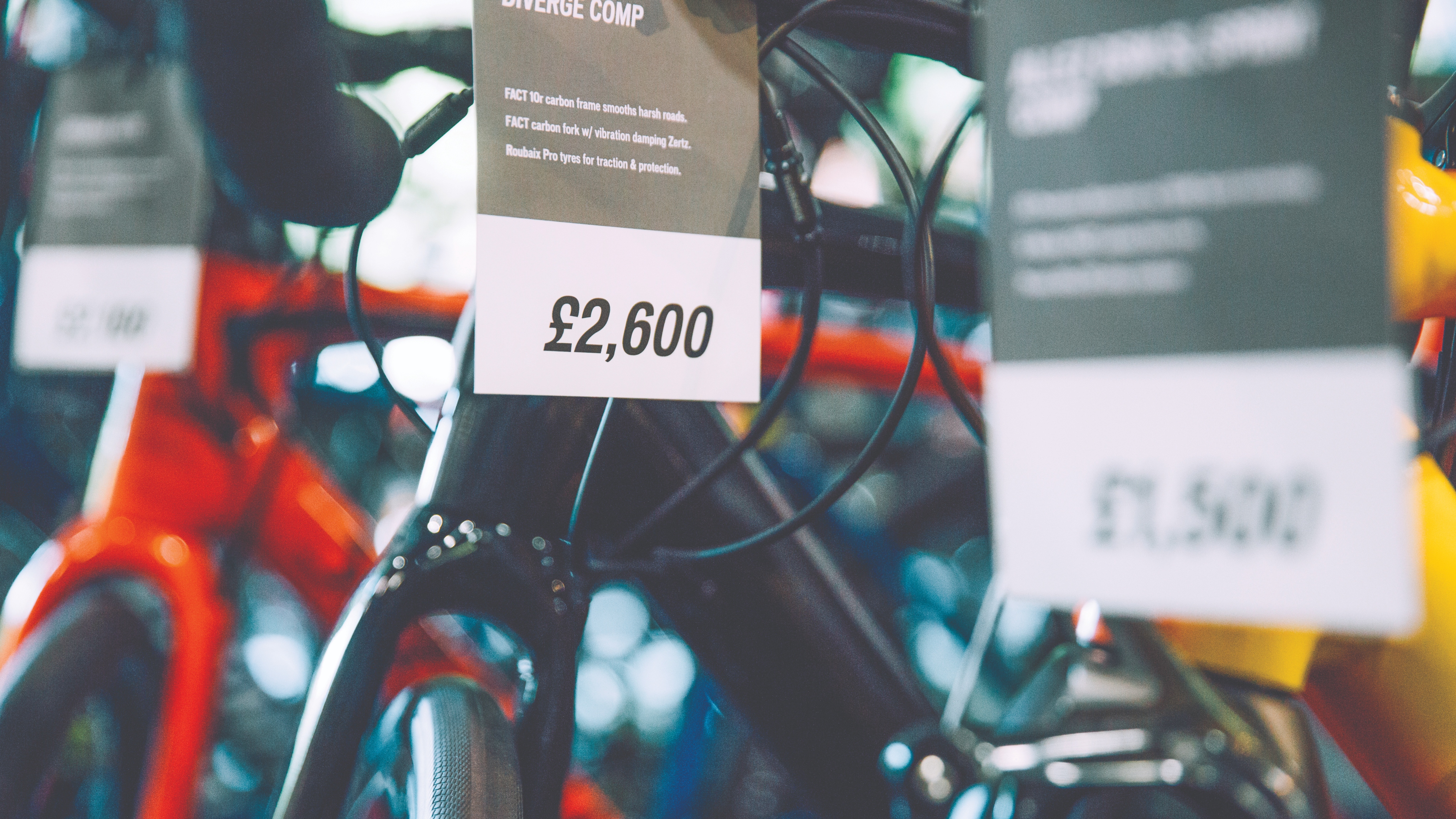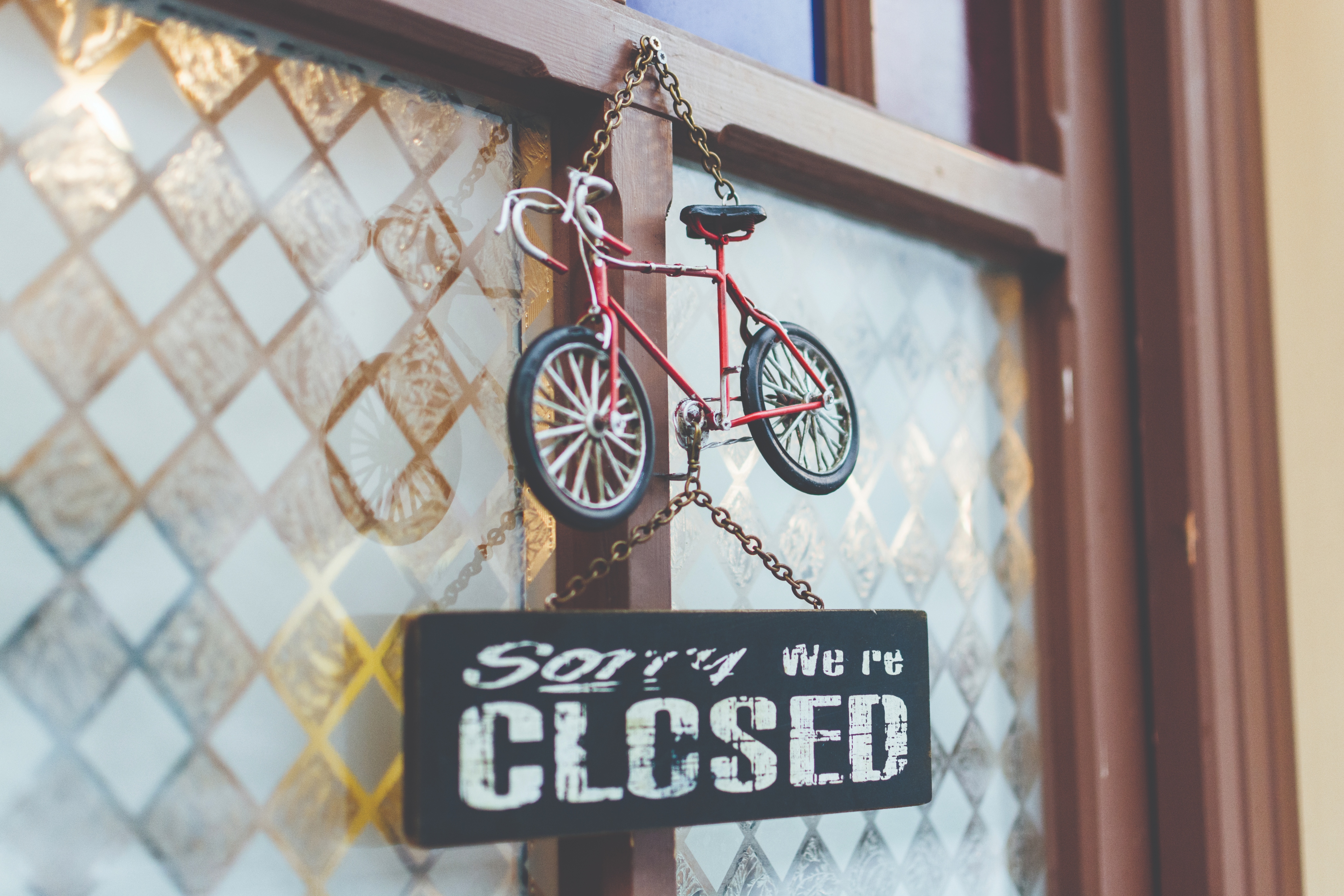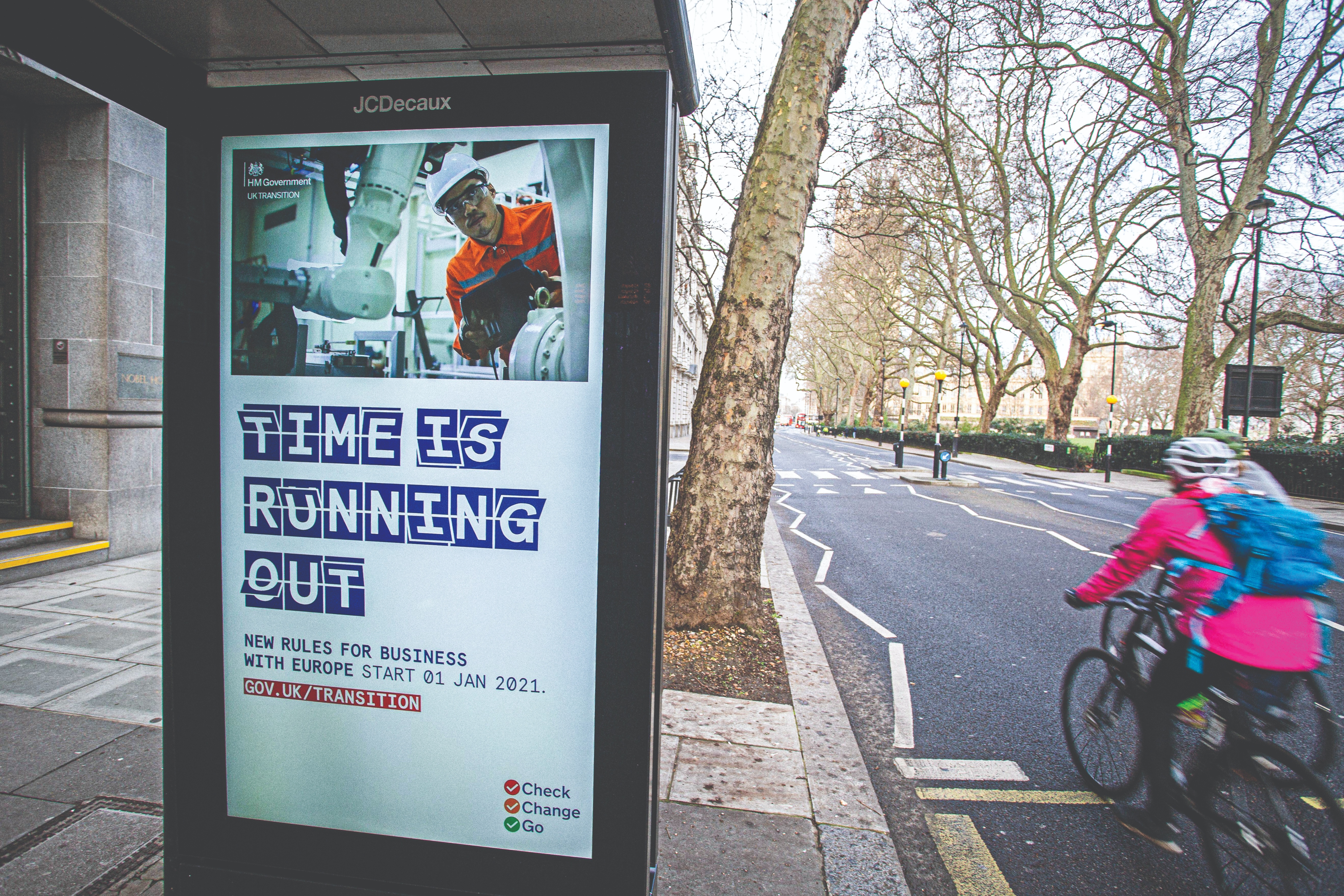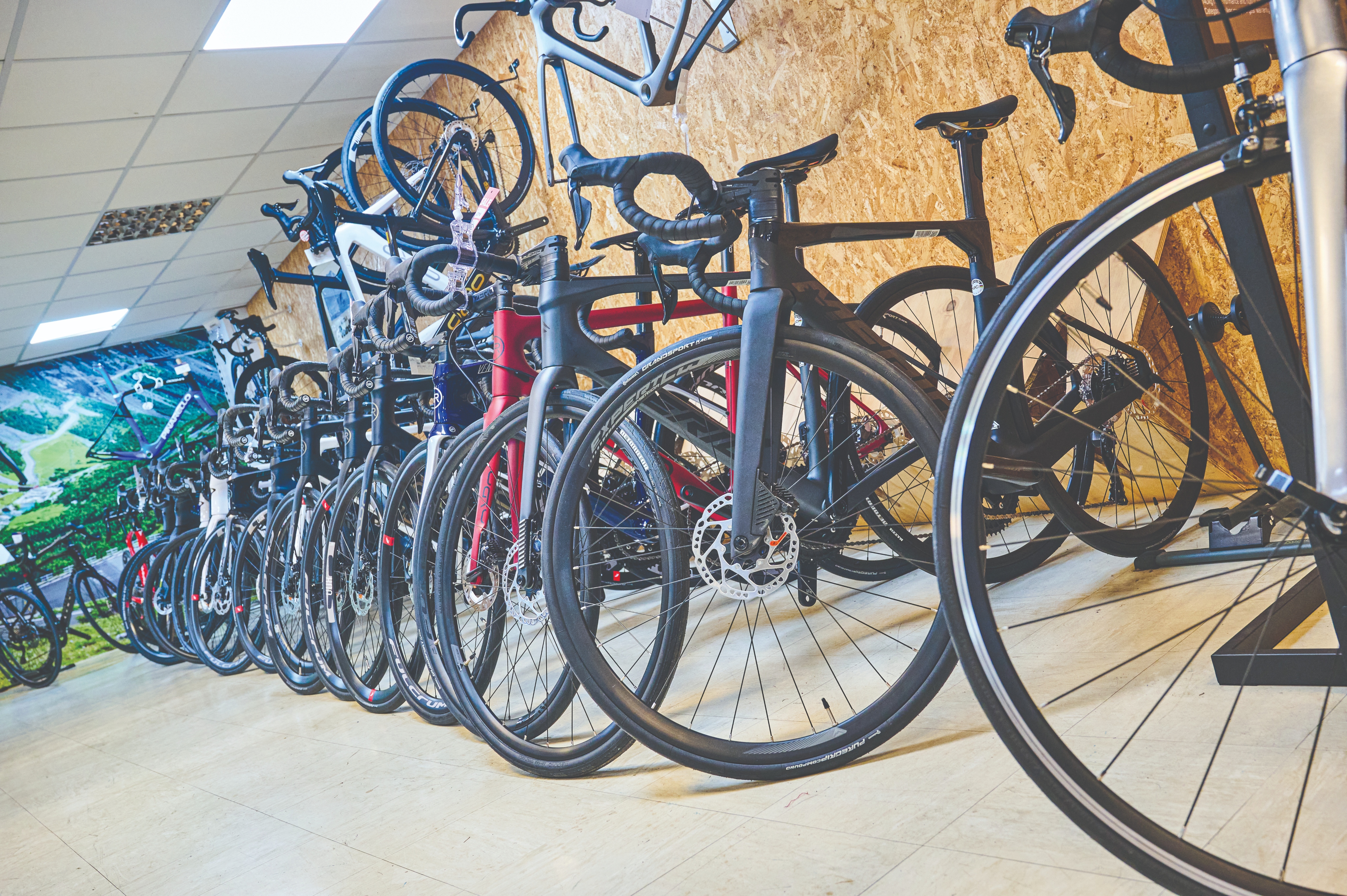
WiggleCRC, Planet X, Orange Bikes, Islabikes… The last 12 months have seen some of our biggest bike brands go to the wall. Of those that have survived, many have been forced to offer unprecedented levels of discount. The closures have led to hundreds of job losses – WiggleCRC alone axed approximately 450 before going into liquidation – and the winding down of iconic, established manufacturers is an outcome no one would have wished for.
As an end-user, though, it’s been hard not to be tempted by the discounts – bargains galore, with deals as enticing as 50% off and even buy-one-get-one-free. But is now the best time to buy? To answer this question, we need to understand how this situation arose and where prices are set to go next.
Boom then bust
The bike industry is currently facing myriad problems, most of which began in 2020. With the boom in demand for bikes and kit during the pandemic lockdowns, brands, distributors and dealers couldn’t keep up. “In a very short period, a slightly overstocked industry suddenly ran out – off the back of rampant demand around the world,” says Simon Irons, associate for the Bicycle Association’s data and insights team. “The supply-chain lead time is long and quite rigid – it was already six to nine months, but in some cases people were quoting two to three years.”
Distributor MooreLarge entered administration in March 2023, 2Pure and FLi followed soon after. At the turn of 2023, British kit companies Presca and Milltag were forced to close down, and children's bike specialist Islabikes halted production in October 2023. WiggleCRC went into administration in the same month, appointing liquidators in March 2024.
Brands, distributors and shops were forced to gaze into their crystal balls and place orders based on where they thought the market would be on the other side of these lead times, far into the future. Those who bet big – expecting the level of demand seen during the early days of the pandemic to be sustained long-term – were exposing themselves to a major risk: that the market would cool down, leaving them with piles of unsold stock, which is exactly what happened.
According to data from the Bicycle Association, mechanical bike sales soared to 2.7m units in 2020 before plummeting to 1.6m units in 2022. In terms of full-market UK sales, that translates to £2.1bn dropping like a stone to £1.6bn. “The Covid boom dissipated in about April 2021,” says Irons. “Just at the point where the customer demand went back to normal, all this stock arrived.”

Part of the problem, explains Irons, was that many customers brought forward their purchases – the proportion of new customers was smaller than many in the industry assumed. “In the last couple of years, the industry has been coming to terms with this huge stock mountain coming into the country. Many would-be customers had already made their purchases,” he says. “As a result, anyone who either made the wrong bet on stock or was careless has been significantly financially stressed.”
Dominic Langan, CEO of the distributor Madison, believes that big brands and online retailers bore the brunt. “A lot of the IBDs [independent bike dealers] are still in OK shape,” he says. “They may have carried too much stock but [relative to bigger companies] it wasn’t as high. The bigger entities were hit hardest, as they were having to cover third-party storage as well as inventory, and when sales slow down it’s not great if you’re close to the edge or stretched already.”
William Pearson, CEO of bike manufacturer and shop Pearson, agrees with Langan, highlighting the perfect storm where panicking retailers “realised they needed to turn their stock back into cash as quickly as possible”. He explains that his firm, as a higher-end specialist – “typically producing fewer numbers for retailers buying fewer numbers” – avoided major overstock issues. Even so, the ‘fire sale’ effect has still been felt. “We were doing really nicely up until Q1 of last year and then we definitely saw the effects of a lot of cheap stock in the market,” says Pearson. “Our lower-end bikes were up against a massive backdrop of discounts,” he adds.
Perfect storm

The problems for the UK industry did not end with overstocking. Brexit has led to longer delivery times and increased duties – a bike assembled in the UK is subject to 14% tariffs if less than 70% of it is made from British materials and parts, and the reverse is true when exporting to the EU. At the Bicycle Association’s 2024 annual conference, Irons highlighted that 67% of audience members polled said that Brexit had had a strongly or slightly negative impact.
A rise in raw materials and labour costs in South East Asia, where most bike factories are based, has also caused the base price of bikes, parts and accessories to go up. Th row in unpredictable shipping fees owing to the ongoing crisis in the Red Sea and it’s hard to rule out further rises. “We try and absorb a lot of it if we can,” says Pearson, conceding that some increases will need to be passed on to customers.
Increased interest rates and a cost of living crisis have wiped out consumer confidence, so it’s no surprise that the Bicycle Association’s annual market report revealed that 2023 saw the worst bike sales this century, with the volume of mechanical bikes sold falling a further 5% to 1.6m following a 23% drop in 2022 – the sales volume running 33% below 2019’s 2.3m.
Despite this, Langan is feeling optimistic in the medium-to-long term. “I think it will start stabilising: parts and accessories seem to be doing OK, suggesting that people are now replacing or upgrading; gravel is still good; we’ve got huge potential with e-bikes; the sub-£1,000 hybrids sector is starting to come back again.” Indeed, in the road and gravel sectors, the report showed year-on-year increases of 8% and 11% respectively.
The next 12 months could see even more change in the market, from the increase in people returning to workplaces aiding sales of commuter bikes and parts, to the outcome of the UK general election: “If a new government comes in with a different policy towards cycling other than the culture war of cars versus bikes, it could have a very positive outcome,” says Madison boss Langan. In the meantime, market conditions remain “challenging”.
One retailer successfully taking on that challenge is Sigma Sports, which has two shops in London and one in the East Midlands, as well as an online presence. The business offers extras such as its premium bike delivery, where your new bike arrives with a qualified mechanic to set it up to your exact measurements. “We’re not just sitting on our hands,” says Sigma’s co-founder Ian Whittingham. “We are always looking at ways of making life easier for consumers.” Business in Sigma’s bricks-and-mortar shops has “remained pretty strong”, he adds. “I don’t think any of us expect this year to be a great one – we’re hoping life will return to normal during 2025.”
The price is right

The past few years’ disruption has had two contrasting impacts on bike prices. Firstly, the RRP of new releases has skyrocketed in recent years – the latest Specialized Tarmac SL7 Sport is £900 more expensive than its 2019 equivalent (see price comparisons below), while the trickle-down of cost-adding technological advancements such as electronic shifting, disc brakes and tubeless tyres to mid-range models means the sub-£2,000 road bike is quickly becoming a thing of the past. On the other hand, the overstocking issue has seen prices of surplus models slashed, with savings of more than 50% in some cases – such as Kona’s ‘BOGOF’ on selected bikes.
Historically, until the past few years, you could pick up a solid carbon-fi bre framed bike featuring either Shimano’s 105 or Ultegra groupset for less than £2,000. Those days are unfortunately long gone. It’s still possible to get change from two grand, but you’ll have to settle for an aluminium frame, and it might not be from a big-name brand.
For around the £3,000 mark, there are carbon bikes with mechanical Shimano Ultegra or electronic 105 Di2 drivetrains, but beyond this sweetspot, prices and specs escalate sharply. Arguably, £3,000 is the point beyond which you see diminishing returns – performance gains no longer proportional to additional outlay. Then again, the reality for most of us is that we spend as much as we can afford.
“Complete bikes is where there’s still a lot of overstocking and that’s going to take probably the rest of this year to get through,” says Langan, adding that manufacturers with new releases in the pipeline are striving to clear the decks and “call it a day” by selling old stock at cost or even below it. “They’ll all be aiming to bring in their new models this summer. As soon as they get the new stuff in and bring the prices to more stable levels, that’s when they’ll start making some money again.”
So if your wallet is burning a hole in your pocket and you’re in the market for a new bike, when is the optimum time to buy? “There’s no reason now to delay a purchase – we have [fewer] bikes on promotion than we had six or nine months ago,” says Whittington, explaining that the best deals on high-end road bikes and gravel deals have now passed. Big savings can still be snapped up on entry-level or electric models.
There is no time like the present, it would appear. “Will prices come down further? I don’t know,” says Whittington. “We’ve seen some significant hikes in pricing in the last few years based on the costs of all materials and shipping. But it doesn’t feel that prices will adjust too much, so I think now’s as good a time as any [to buy].”
If you can’t find the new deal you’re after, the second-hand market is awash with bikes bought during peak pandemic that have since sat collecting dust in garages and sheds. In an attempt to woo customers away from the second-hand market, Sigma Sports recently announced a part-exchange initiative in partnership with Cycle Exchange, where the value of your old bike can be put towards store credit or the purchase of a brand-new bike. Again, it’s an example of Whittington and his team trying to think outside the box.
The turmoil we’ve seen in the bike industry in the last 12 months is the conclusion of several shocks that have occurred in quick succession since 2020. Those optimistic when pre-ordering for a post-Covid world have been punished for their bullishness, as have financiers who invested at the industry’s peak. Those without contingency funds have been unable to weather the storm – which might not be over just yet.
While the loss of manufacturers comes with a reduction in competition and choice, the closure of an online giant such as WiggleCRC may benefit smaller businesses and local bike shops, at least in the short term. For those of us in the market for a new bike, there may never have been a better time to buy.
Bike cost vs inflation
Everything is going up in price, but how closely aligned is the cost of new bikes to the Consumer Price Index (CPI) – the measure of infl ation that the Bank of England aims to keep at 2%?
“For the vast majority of the past 15 years, we enjoyed unusually lowinfl ation,” says Sarah Coles, head of personal finance for Hargreaves Landsdown. “Between 2012 and 2021, we didn’t see it lift over 3%. There was even a very brief moment in 2015 when infl ation turned negative as prices fell. The past three years have presented a stark contrast, with relentless rises to a peak of 11.1% in 2022. However, within the overall fi gures, there are always major variations. At the moment, the ONS figures show bike prices down 1.6% from this time last year.”
How do these figures tally with bike prices? We looked at three mid to high-end bikes from the big three – Specialized, Giant and Trek – and tracked the historic RRPs of each model as best we could from 2008 to 2024. Bear in mind the sharp increase in inflation in the final year.
Yes, you’re right to think that the price of bikes is rising rapidly. The closest to the CPI is the Giant TCR, which has increased by £1,149 (62%) between 2009 and present day, while a high-spec Trek Madone has gone up by an eye-watering 343% (or almost £8,000).
The evolution and improvement in components that are supplied as standard over the last 15 years means it’s not a 100% fair comparison, but if you turn back the clock just half a decade, the Tarmac, TCR and Madone have still increased by 38%, 58% and 36% respectively – outstripping the CPI’s 22%.







